There can be your advertisement
300x150
How Water Came into the House: The History of Plumbing from Roman Aqueducts to the Kitchen Faucet
A journey of two thousand years
You turn the faucet handle — and hot water flows. So familiar it seems like it's always been this way. Yet just a hundred years ago people had to fetch water from wells or rivers, and hot water was heated in stoves. How did humanity evolve from clay pitchers to thermostatic mixers? And why is this story more important than it appears?
Main points from the article:
- Roman aqueducts were so advanced that some still function after 2000 years;
- Household plumbing radically changed housing layouts and social relationships;
- Centralized water supply in Russia only appeared in the 19th century, becoming widespread in the 20th;
- Modern systems consume ten times more water than our ancestors did;
- Access to clean water remains one of humanity's major challenges.
Roman Engineers: When Water Flowed into Every Home
Let's start with the most impressive — Ancient Rome. Imagine: 1st century AD, a city population of over a million people, and nearly every home had plumbing. Sounds fantastical? But it's historical fact.
The Romans built a system of 11 aqueducts with a total length exceeding 500 kilometers. These stone 'rivers' carried water from mountain springs directly into the city, overcoming valleys and hills. The Aqua Appia aqueduct, built in 312 BC, worked for over 1500 years. The famous Pont du Gard in France, though no longer functioning as a water supply system since the 5th century AD, still stands today and amazes tourists with its grandeur.
But what's most impressive isn't the scale but the details. Roman engineers calculated gradients to within millimeters: too steep and water would erode walls, too shallow and it would stagnate and grow algae. They invented settling tanks for water purification, distribution reservoirs for even flow, and even early water meters.
In wealthy homes there were not only taps but also fountains, pools, and heated floors with water heating. Thermae — public baths — consumed as much water as a small city does today. Romans used 500 to 1000 liters of water per person daily — more than a modern Russian citizen.
What happened to this engineering marvel? Barbarians destroyed aqueducts in the 5th-6th centuries, and Europe reverted to wells and buckets for a thousand years. Rome went from a million-person city to a village of 30,000 inhabitants.
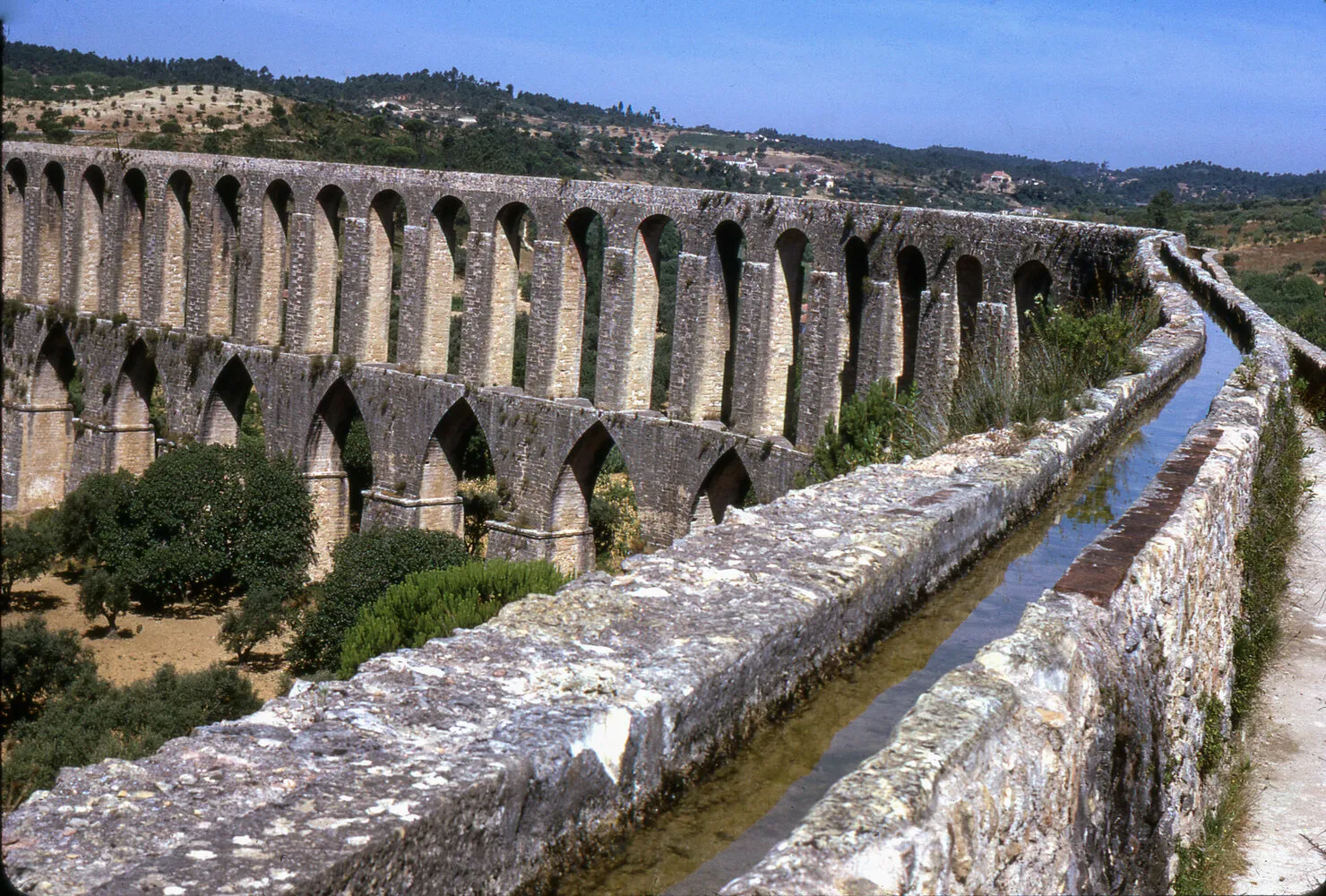 Photo from website: upload.wikimedia.org
Photo from website: upload.wikimedia.orgMedieval Times: When Water Became a Luxury
After the fall of Rome, plumbing disappeared from Europe for nearly a millennium. Cities were built near rivers, residents carried water in pitchers and barrels. The wealthy hired water carriers — specialized people who carried water from house to house all day.
In medieval castles, water was stored in cisterns collecting rainwater from rooftops. Knights rarely bathed not out of disgust for cleanliness, but because every bucket of water was hard to come by. Thus, perfumes were invented — to mask natural odors.
Interestingly, during this time water supply flourished in the Arab world. Cordoba, Damascus, and Baghdad had magnificent water systems with fountains and baths. Crusaders, encountering Arab cities for the first time, were amazed by their luxury: water flowed directly into homes and people bathed daily.
In Russia, for a long time people relied on rivers and wells. In wooden towns, plumbing was dangerous — one spark could start a fire. Water came from rivers or wells dug in courtyards. In winter, snow was melted — considered the purest water.
An interesting fact: the profession of a water carrier existed in Russian cities until the 20th century. In St. Petersburg, water carriers sold water from the Neva River, with river water considered healthier than well water. A bucket cost 3-5 kopecks — significant money for a common person.
Renaissance of Engineering: How Europe Remembered Comfort
The revival began in the 14th-15th centuries, when European cities grew richer and larger. The first to remember plumbing were in Italy — they preserved Roman traditions and documents.
In 1453, Florence built the first city water supply system since antiquity. Water was delivered through clay pipes from mountain springs. However, the system was only public — private homes continued to rely on wells for another 300 years.
London received its water supply in 1613. A private company, the New River Company, built a canal 62 kilometers long from sources in Hertfordshire. Water was distributed through wooden pipes, and taps were installed in homes. Incidentally, the English word for plumber comes from Latin 'plumbum' (lead).
An interesting detail: early taps weren't rotary but lifting. To open the water, one had to lift a heavy metal rod. This required strength, so taps were often made very small — to save water.
In Paris, the water supply system appeared during Louis XIV. The king built a grand 'Machine of Marly' — a system of water wheels and pumps that lifted water from the Seine to 150 meters high and delivered it to Versailles. Maintaining this marvel cost 10% of the kingdom's budget.
Russian Plumbing: From Peter to Communism
In Russia, the first water supply system was built by Peter I in the Summer Garden in 1705. Water from the Ligovka River flowed through wooden pipes to fountains. The system only worked in summer — winter pipes froze. The first household water supply pipes were even earlier, at Menshikov's palace.
A true urban water supply in St. Petersburg only appeared in 1863. An English company built a water treatment station on the Neva, laying cast iron pipes along main streets. However, connecting was expensive — it cost a worker's annual salary.
Moscow received its water supply later — in 1804, the Mytishchi water supply was completed, but mass construction began in 1874. Water came from Mytishchi sources. Interestingly, Muscovites initially didn't trust 'machine' water and continued buying river water from carriers.
By 1917, water supply was only in major cities and not in all homes. In communal apartments, one tap served 5-6 families. Hot water didn't exist at all — it was heated in stoves and kettles.
Massive construction of water supply began in the USSR in the 1930s. Every new factory and city necessarily received a water supply network. By the 1960s, most urban apartments had water supply, but hot water remained a luxury.
Hot water supply became widespread only in the 1970s-80s. Remember how happy you were when hot water finally came to your home? No more heating water in pots, taking a shower anytime you wanted.
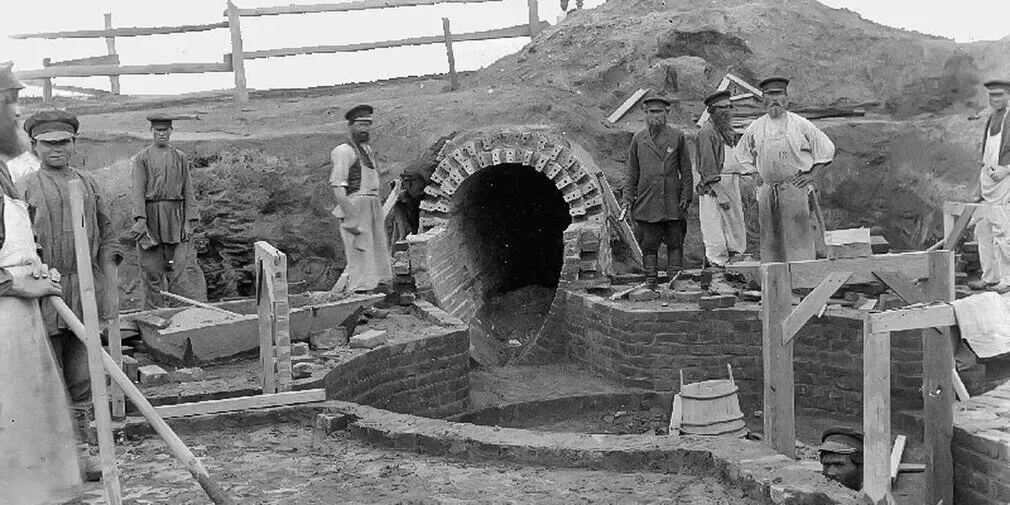 Photo from website: mos.ru
Photo from website: mos.ruHow the Faucet Changed the Home: A Revolution in Layout
The introduction of plumbing radically changed residential architecture. Previously, homes were built near water sources — rivers, wells, springs. Plumbing freed architects from this constraint.
In homes without plumbing, kitchens were separate rooms or even outdoors — due to fire risk. With the advent of plumbing, kitchens moved into the house and became an important part.
Bathrooms appeared only with plumbing. Before, people bathed in baths, tubs by the stove, or outdoors in summer. The first bathrooms were luxuries — built in basements or attics, away from living rooms.
Interestingly, how the status of bathrooms changed. In the 19th century, they were hidden in basements or pantries. In the 20th century, bathrooms became a standard part of every apartment. In the 21st century, bathrooms evolved into relaxation spaces — with jacuzzis, saunas, and high-end fixtures.
The introduction of plumbing also changed social relationships. Previously, fetching water was a social event — neighbors met at wells to discuss news and business. Plumbing made daily life more private but also more isolated.
Hot Water: The Second Revolution
Cold water supply solved the problem of delivering water, but didn't eliminate the need to heat it. For a long time, hot water was prepared in stoves, on stoves, or special heaters.
The first hot water supply systems appeared at the end of the 19th century. In wealthy homes, gas or coal water heaters were installed — ancestors of today's boilers. But this was a luxury item.
Mass hot water supply began with centralized systems. In the USSR, thermal power plants were built that produced both electricity and hot water for heating and supply. This system was very efficient — solving energy and comfort issues simultaneously.
An interesting fact: in the USSR, there were norms for hot water consumption — about 140 liters per person daily. This was considered sufficient for all household needs. Today, the average Russian uses about the same amount of hot water daily but overall consumption has increased.
The appearance of hot water from the tap was a true revolution in daily life. No longer needed to plan washing ahead, heat water in pots, or economize every drop. Showers became a daily routine, not a weekly ritual.
Modern Systems: Smart Plumbing
Today, water supply is a complex high-tech system. Water undergoes multi-stage purification, is enriched with beneficial substances, and is controlled by automation.
Modern taps are equipped with thermostats that maintain a set temperature. Sensor mixers turn on with hand movement. Recirculation systems ensure instant hot water delivery.
In 'smart homes', plumbing is integrated into a general control system. You can turn on the shower from your smartphone, set water temperature at specific times, and receive notifications about leaks.
Water purification systems have emerged right in apartments — from simple filters to reverse osmosis units. Many no longer trust centralized purification and prefer to control water quality themselves.
Water-saving technologies are developing. Aerators mix air with water, reducing consumption without compromising comfort. Dual-flush toilets save up to 30% of water. Rainwater collection systems use water for technical needs.
Ecology and Economy: The Price of Comfort
Modern plumbing is not just comfort but also a serious burden on nature. One tap in an apartment consumes as much water as once served an entire village.
The average Russian today uses 200-250 liters of water per day for all needs — from drinking to showering. For comparison: a medieval city dweller used 20-30 liters, while some African residents often use only 15 liters a day.
Producing and delivering hot water requires enormous energy. Heating water for one shower uses as much energy as a 100-watt bulb burns over 10 hours.
Wastewater treatment is another problem. Everything that goes into the sewer must be cleaned to a level safe for nature. Modern treatment plants are high-tech enterprises that cost billions.
The Future of Water: What Lies Ahead
- Future plumbing will be even smarter and more ecological. AI systems will analyze water quality in real time, predict failures, and optimize consumption.
- Technologies for producing drinking water from air, desalinating seawater, and deep wastewater treatment are developing. In changing climate conditions and growing populations, these technologies become vital.
- Closed-loop water supply systems are emerging where water is purified and reused directly in homes. These systems already operate on space stations and experimental settlements.
- In the future, each home might have its own water production and purification system — like many homes today have solar panels. Centralized plumbing may become a backup rather than the main system.
From Roman aqueducts to smart taps — a journey of two thousand years. But what's most impressive is that core principles remain the same: find clean water, deliver it to the home, and make it accessible to all. Only technology and scale have changed.
Each time you turn a faucet, you benefit from thousands of years of human effort. Behind this simple gesture lies the history of civilization, triumph of engineering thought, and constant care to ensure everyone has clean water. Perhaps that's why access to water is considered one of the basic human rights — without water, there is no life, and without plumbing, there is no comfort.
Cover from website: upload.wikimedia.org
More articles:
 Soviet Furniture on 'Avito': How to Tell Treasure from Junk
Soviet Furniture on 'Avito': How to Tell Treasure from Junk Color Map of the House: How to Use 2025 Trends in Each Room
Color Map of the House: How to Use 2025 Trends in Each Room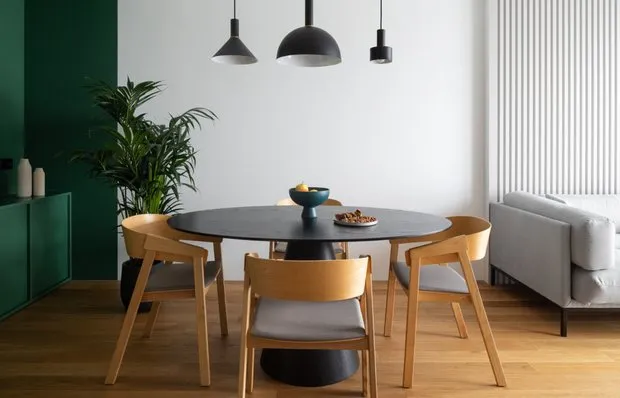 10 Dining Tables: Trendy Models for Your Interior
10 Dining Tables: Trendy Models for Your Interior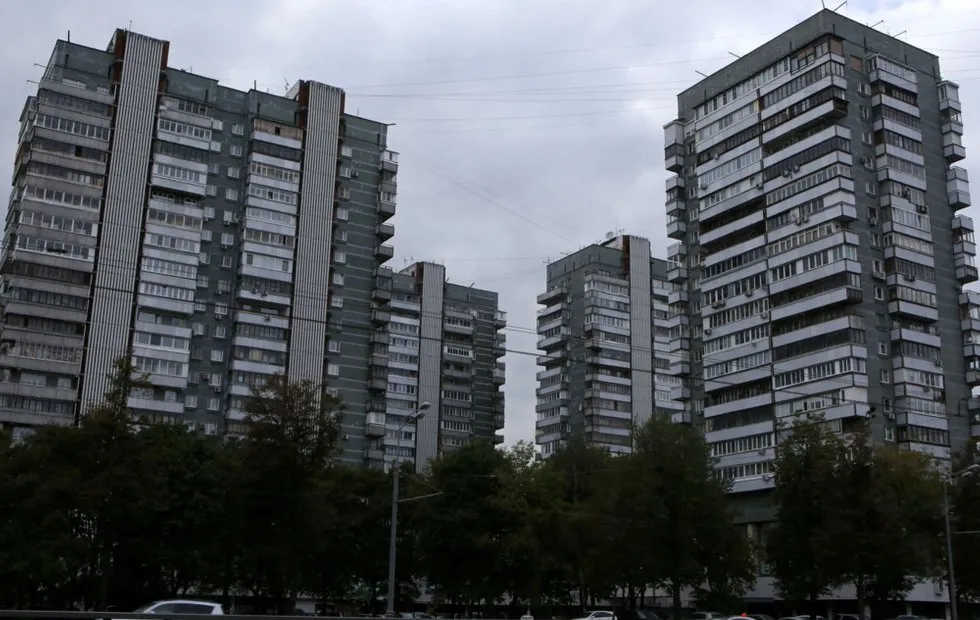 Myths or Truth: Secrets of the Strangest Houses in Moscow
Myths or Truth: Secrets of the Strangest Houses in Moscow Interior Design Trends 2025–2026: Key Directions
Interior Design Trends 2025–2026: Key Directions Uma Thurman in the New 'Dexter': Secrets of the Role and What the Actress Revealed About Filming
Uma Thurman in the New 'Dexter': Secrets of the Role and What the Actress Revealed About Filming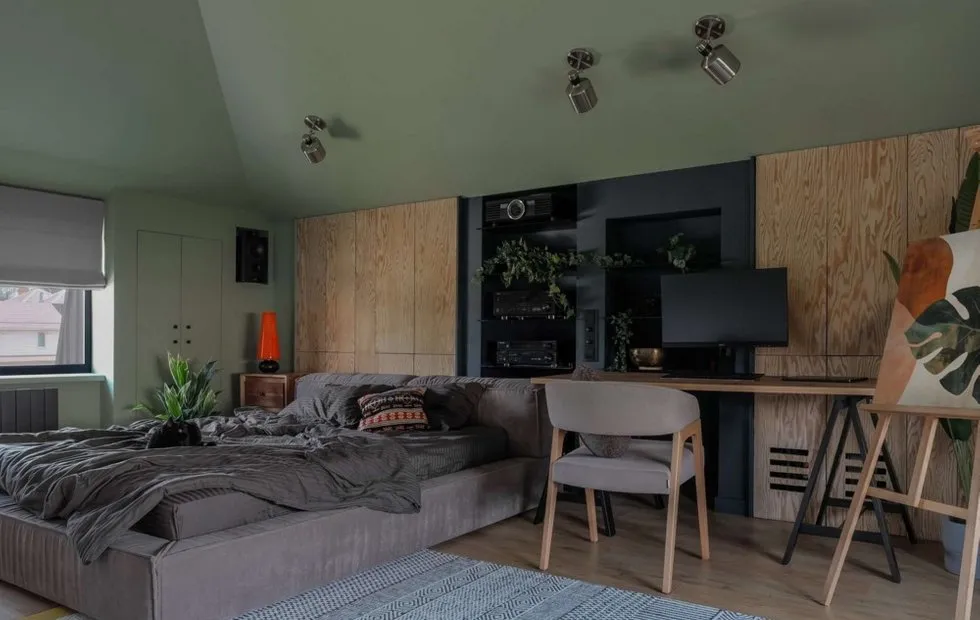 Electricians Scammers: 5 Schemes That Will Cost Hundreds of Thousands
Electricians Scammers: 5 Schemes That Will Cost Hundreds of Thousands China Town: Why the Main Trading Quarter Was Named After Celestial Kingdom
China Town: Why the Main Trading Quarter Was Named After Celestial Kingdom